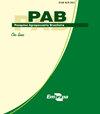草甘膦处理转基因大豆种子储备动员及幼苗形态研究
IF 0.7
4区 农林科学
Q3 AGRICULTURE, MULTIDISCIPLINARY
引用次数: 0
摘要
摘要本研究旨在探讨草甘膦除草剂对转基因大豆种子储备动员和幼苗形态的影响。选择2个耐除草剂品种(TMG 1264RR和P98Y11)和2个对除草剂敏感的品种(Emgopa 315和UFUS 7415)作为研究材料,在浓度为0.00、0.06和0.12%的草甘膦溶液处理下进行萌发、幼苗长度和储备动员试验。测定了下胚轴/胚根比和储备转化为幼苗的效率。草甘膦浓度越高,正常苗率越低,苗长越短,主要表现在对除草剂敏感的品种。耐草甘膦基因型“TMG 1264RR”调动了更多的储备,并更有效地将生物量转化为幼苗。除草剂的施用减少了幼苗的平均长度,导致根比下胚轴短。在萌发过程中,除草剂改变了幼苗的形态,因为幼苗的下胚轴比胚根成比例地大。虽然施用草甘膦改变了四种评估基因型的长度、重量和储备动员,但受草甘膦影响最大的是“Emgopa 315”和“UFUS 7415”,它们是草甘膦敏感基因型。本文章由计算机程序翻译,如有差异,请以英文原文为准。
Seed reserve mobilization and seedling morphology of genetically modified soybean treated with glyphosate
Abstract The objective of this work was to evaluate the effects of the application of the glyphosate herbicide on seed reserve mobilization and seedling morphology of genetically modified soybean. Two herbicide-tolerant (TMG 1264RR and P98Y11) and two herbicide-sensitive (Emgopa 315 and UFUS 7415) cultivars were selected for the study and subjected to germination, seedling length, and reserve mobilization tests after treatments with glyphosate solutions at the concentrations of 0.00, 0.06, and 0.12%. The hypocotyl/radicle ratio and the efficiency of conversion of reserves to seedlings were also determined. The higher the concentration of glyphosate, the lower the percentage of normal seedlings and the shorter seedling length, mainly in the herbicide-sensitive cultivars. The 'TMG 1264RR' glyphosate-tolerant genotype mobilized more reserves and was more efficient in converting biomass into seedlings. Herbicide application reduced the average length of the seedlings and caused the roots to become shorter than the hypocotyls. During germination, the herbicide changes seedling morphology since the seedling hypocotyl becomes proportionally larger than the radicle. Although, when applied, glyphosate altered the length, weight, and reserve mobilization of the four evaluated genotypes, the most affected were 'Emgopa 315' and 'UFUS 7415', the glyphosate-sensitive ones.
求助全文
通过发布文献求助,成功后即可免费获取论文全文。
去求助
来源期刊

Pesquisa Agropecuaria Brasileira
农林科学-农业综合
CiteScore
1.20
自引率
0.00%
发文量
45
审稿时长
9-18 weeks
期刊介绍:
Pesquisa Agropecuária Brasileira – PAB – is issued monthly by Empresa Brasileira de Pesquisa Agropecuária – EMBRAPA, affiliated to Ministry of Agriculture, Livestock and Food Supply. PAB publishes original scientific-technological articles on Plant Physiology, Plant Pathology, Crop Science, Genetics, Soil Science, Food Technology and Animal Science.
Its abbreviated title is Pesq. agropec. bras., and it should be used in bibliographies, footnotes, references and bibliographic strips.
 求助内容:
求助内容: 应助结果提醒方式:
应助结果提醒方式:


